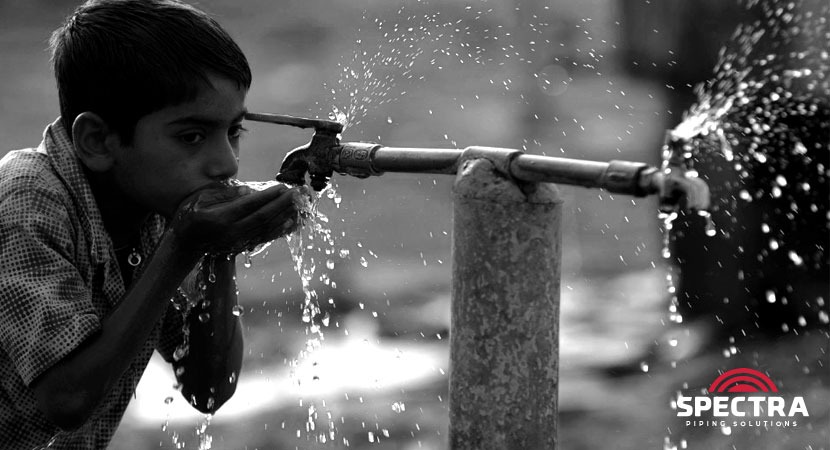In India, the highest mortality rate from waterborne diseases is in children who are under the age of five. Poverty and rural infrastructure are making water potability a distant dream for many regions in India. Even though access to safe drinking water in India has seen an increase in the past decade, unsafe water continues to affect the health of the population that lives in the interiors. Not only far off areas but even in developed regions, unsafe water is the only available option for poor people to consume and use for washing and toilet activity. Unfortunately, there is minimal segregation and drainage system implementation even in poorer sections of the Indian metros, making it an alarming health hazard.
Microbial contamination is a predominant form of water contamination in India, as revealed by an analysis done by the Central Pollution Control Board’s water quality monitoring, from the years 1995 to 2009. This is a two-pronged problem. Firstly, there is a severe increase in municipal sewage quantity due to population increase and urbanization. The municipal authorities are incapacitated to handle treatment of such a high quantity of contamination. Secondly, the water bodies into which the sewage eventually gets dumped in, are unable to dilute the contamination. Due to this reason, sewage is polluting Indian drains and rivers. Access to safe drinking water remains the greatest challenge in urban as well as rural areas. 67 per cent of Indian households does not treat their drinking water. In the urban areas, safe water supply is vulnerable as water pipelines and open drainage channels are running side by side.
To counter this tremendously challenging public health problem, a Safe Water System has been planned and developed by the World Health Organization (WHO) and Population Services International (PSI). The SWS is a safe drinking water plan which will help curb the waterborne communicable diseases in India. The Safe Water System uses a strategy to disinfect water at the point-of-use, the household level and in the domestic water storage vessel to prevent water recontamination.
The government too has created programs with widespread drinking water and sanitation schemes since 2014 under the umbrella of Swachh Bharat Mission. Within the Gramin initiative by the Ministry of Drinking Water and Sanitation, 8,86,68,591 toilets* have been constructed totally across the country to control open defecation. Although open defecation is an ancient practice, with development and urbanization, it has become a health hazard and a human dignity issue. Open defecation has been the major source of disease and affects drinking water causing diseases like diarrhoea that carry a high mortality rate. By building toilets and educating villagers, the government is eradicating open defecation step by step. Besides diarrhoea, other water-borne communicable diseases amoebiasis, cholera, Hepatitis A, polio, gastroenteritis, typhoid etc. also need to be curbed by using these measures.
As we can see, untreated sewage in urban localities needs to be segregated and open defecation in rural population needs to be eliminated. Systematic operation and maintenance of water sources from both surface and groundwater bodies is imminent. Spectra Pipes has been instrumental in providing uPVC and CPVC pipe systems for all kind of water transportation, storage and portability. SPECTRA SWR drainage systems are designed for quick and efficient removal of soil, waste and rainwater without leakage. Our products are highly resilient, tough and durable with high tensile and impact strength. We also manufacture Underground Drainage Pipes that carry soil and waste from building to roadside sewers or drains and from there to treatment plants or disposal points. These pipes can also be used for rainwater harvesting. Being 100% watertight, these pipes are free from ingress and seepage of water and hence considered to be most hygienic.
Spectra Pipes aspires to continually support the country’s water potability, transportation and storage solutions by making the choicest quality products for urban and rural water sustenance. Click here to learn more about our products and philosophy.
*data as of November 2018


